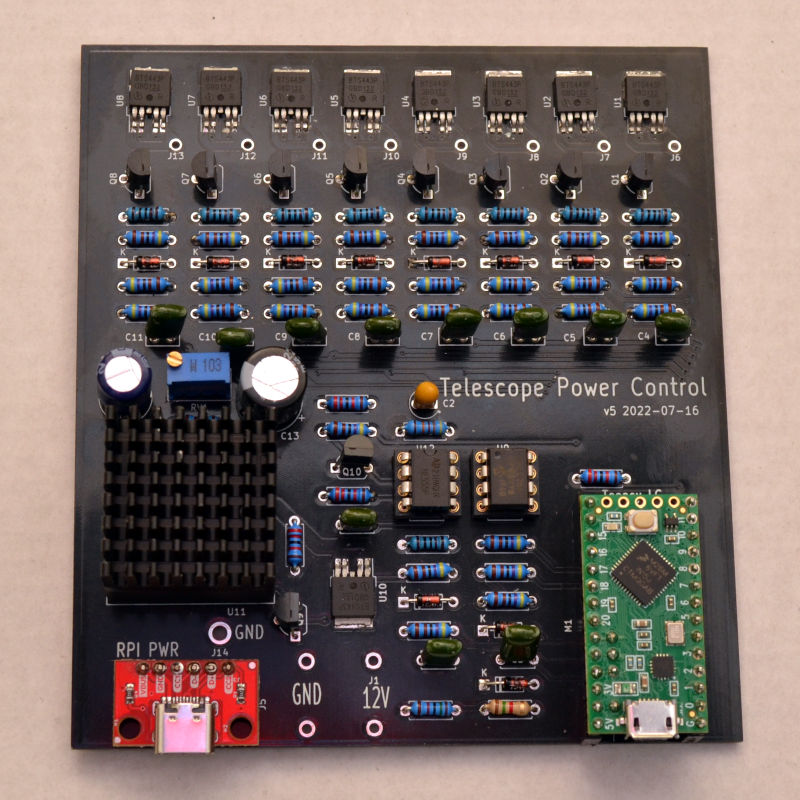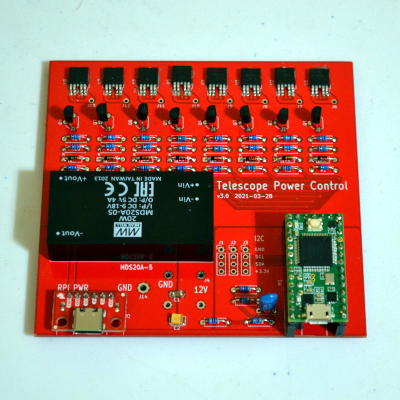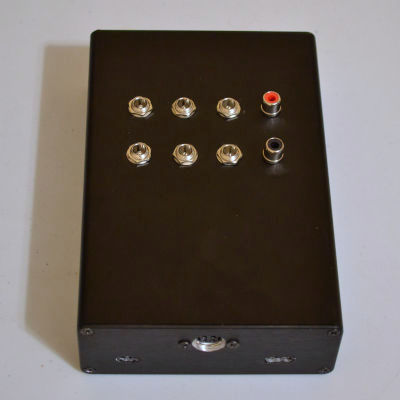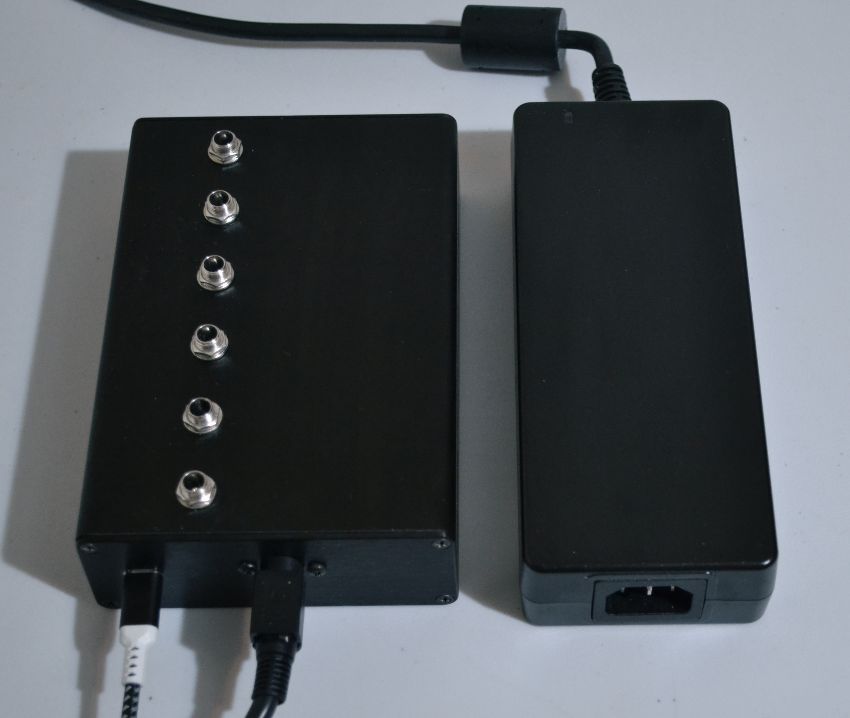Telescope Power Distribution
I've built five telescope power boxes, each building on the previous version, and I've used every one of them on the scope. The first was just a filter with six outlets. The second added the ability to switch the ports on and off. The third added the ability to read the current being used by each port. The fourth was a double back on the third to correct an unforeseen fault, and replaced the heater ports with two additional switched ports. The fifth and final revision added the ability to monitor the Raspberry Pi current use and to power-cycle it when needed. Each revision is a usable telescope power box.
This ongoing project is at its end, though. The fifth and final version is complete. The power cycle of the Pi is the one thing I was missing in order to make the scope completely remote operable. Of course there is a trick to it. The reset usually needs to happen when the Raspberry Pi is incapacitated, and the Pi can't initiate it. Read on to see how that problem was solved.
The Raspberry Pi power supply is entirely optional. If you don't use a Raspberry Pi, you can just leave off those parts that make up the power supply.
The Power Boxes from newest to oldest
The 4th revision of the Power Distribution Box has the same features of version 3, but uses a Teensy LC, and a more robust analog section. The heater ports are gone, replaced by two more switched ports. Version 3 developed a short circuit in one of the DC barrel sockets, and although the power stuff survived, the Teensy 3.2 did not. An unanticipated failure mode.
The 3rd version of the Power Distribution Box has the same features of version 2 plus a Teensy 3.2 and reads the current for each switched channel and the two heater outputs. The current for each channel and heater is monitored and reported back to the Raspberry Pi, along with the amp-hours, watts, etc. It lived in the box from version 1, until its demise. It failed due to a shorted output connector.
The Telescope Power Distribution Box version 2 has a Seeeduino XIAO and 8 high-side power switches. The 6 individual switched channels may be set to on, off, or automatic on. It also has two heater outputs that can automatically maintain the temperature at a set level above the dew point. A 5V@4A output powers a Raspberry Pi 4B.




